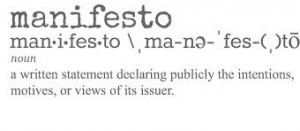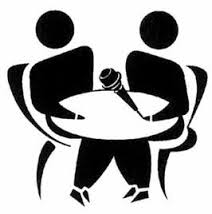
Methods Exercise 5:
Using and Analyzing Digital Media Sources
***What is “contemporary blacktivism” according to FACEBOOK?
“Blacktivism,” which I understand as activism for black interests, usually manifests itself on social media as a refusal to let ignorance and compliance prevail in ways that continue to harm the black community. This can mean anything from discussing bigger systematic issues like police brutality and mass incarceration to “dragging” celebrities who step out of line and enforce already damaging black stereotypes. In short, “blacktivism” is being vocal and tackling the racial issues no one wants to talk about. On Facebook, this concept immediately evokes the #BlackLivesMatter movement, which has had a very significant presence on social media in the last few years. The movement, which came into in 2013 when George Zimmerman was acquitted for the shooting and murder of Trayvon Martin, has since been equated with the ever recurring stories of black men, women and children being killed at the hands of law enforcement. These days, it has broadened even more, and now encompasses a variety of different interests, all for the benefit and advancement of the black community.
I took this as my starting point in answering this assignment question and first typed the words “black lives matter” in the Facebook search bar. From there, I had several options to choose from. The first page on the list was the general Black Lives Matter community page, which had almost 100,000 likes, including my own. There were also subsets of this community that called themselves “community organizations” or simply “organizations,” such as Black Lives Matter Boston (my home city) and Black Lives Matter Minneapolis, a page that a close friend of mine had liked. There does seem to be a marked difference between the more localized pages that categorize themselves as “organizations” and the general “community” page. While the general community page documents protests, business shut downs, and racial injustices from across the country, the localized organizations do more advertising for upcoming community discussions and events as well as posting relevant articles about black health, education, and interests in the presidential elections. Often, the organization pages also re-post information from the general page, presumably to keep their smaller community informed on the bigger nationwide events Black Lives Matter (BLM) is organizing.
In terms of the actual discussions taking place on the pages, they differ too. The general BLM page has a lot of what the Internet likes to call “trolls.” These people only “like” the page to undermine and insult it, so that on almost every post, there is a comment with 50+ likes that reads “#blackliesmatter” or “#whitelivesmattertoo” or even“#blacklivesdontmatter.” It is disheartening to see, but understandable when one considers that, on Facebook, these types of community pages are open to everyone. While the administrators of the page could go and delete every comment that undermines their movement, it makes more of a statement to simply keep posting in spite of them. To those who do support the cause, it is likely that they encounter this ignorance every day on and offline. While “trolls” exist on the localized pages as well, they aren’t as visible or as vocal. These pages are much less vulnerable and public than the general BLM page, so it makes sense that the comments would consist more of encouraging words, jokes and the like.
After the listed relevant pages associated with the words “black lives matter,” Facebook then gives you the option to view the most popular and relevant posts, photos, people, places and more. I chose to scroll down the list of poplar and relevant posts from all over Facebook, which includes not just what my friends and I have posted about black lives matter but also instances where the phrase has come up in newspapers, blogs, magazines, and other social media networks through interface. While the BLM pages allowed me to examine what blacktivism meant for the actual activists and their ardent adversaries, I felt that these search results would allow me to see how the Facebook in general interacted with black activism. Perhaps unsurprisingly, the posts, most of which were new articles, reflected the ongoing debate between “#blacklivesmatter” and “#alllivesmatter.” This discussion certainly keeps the bigger issues that BLM is trying to address at bay. Instead, everyone from presidential candidates, reporters, politicians, TV show hosts and celebrities has an opinion about if the movement is politically correct, if it is affecting crime in any way or affecting police officers in any way etc. But by posting these videos and articles on Facebook, that conversation about black lives mattering is being opened up all the more.
Interestingly, “blacktivism” takes place here just as much as it does on the BLM pages. If activism, as Kvasny, Payton, an Hales quote Denning as defining it, is “normal, non-disruptive use of the internet in support of an agenda or cause” and usually manifests itself in five modes, “collection, publication, dialogue, coordination of action an lobbying decision makers,” I’d say that posts and discussions had outside of BLM pages do more in terms of collection, publication and dialogue. The BLM pages really hone in on the coordination of action and lobbying decision makers in that protests are actively planned, petitions are distributed, and political figures are confronted face to face by activists. But in the comments section of these more general Facebook posts, which again include articles, blogs and videos, supporters collect facts, publish their blog musings and have lively debates with opponents as well as those who may be in the middle. This is not to say that these happenings are any more important than what is taking place on the BLM pages, indeed, the lobbing work and coordinating of these pages are the backbone of the movement, but their words can only get so far when their either preaching to the choir or to people who are against them on principle. Both of these sections of Facebook help define what blacktivism is and help us see just how it manifests on social media platforms such as this one.
Doing this kind of research on Facebook certainly has its strengths. Like most social media, Facebook is a posting and sharing platform, home of both creators and curators, as the Pew Research Center defines them. This means that there are a wide range of potential research tools from posts themselves to articles, blogs, images and videos. One of the biggest hurdles is the automatic personalization of the site. For daily use, this feature is great because you’ll only see things you’re interested in or that relates to you in some way. But for research, it is harder to move beyond that without changing some settings. Luckily, this was not an issue for this assignment because blacktivism is one of my interests, but it is something digital media researchers must keep in mind.
Word Count: 1140



